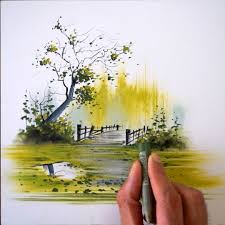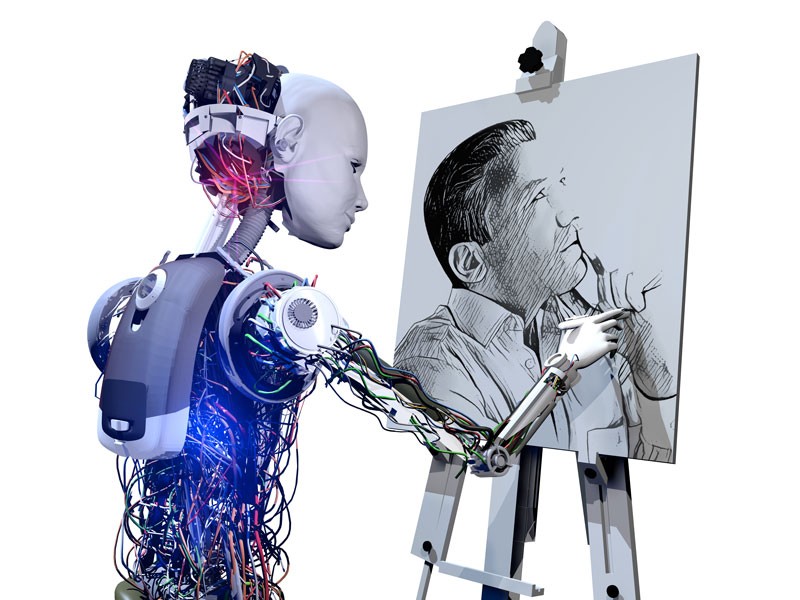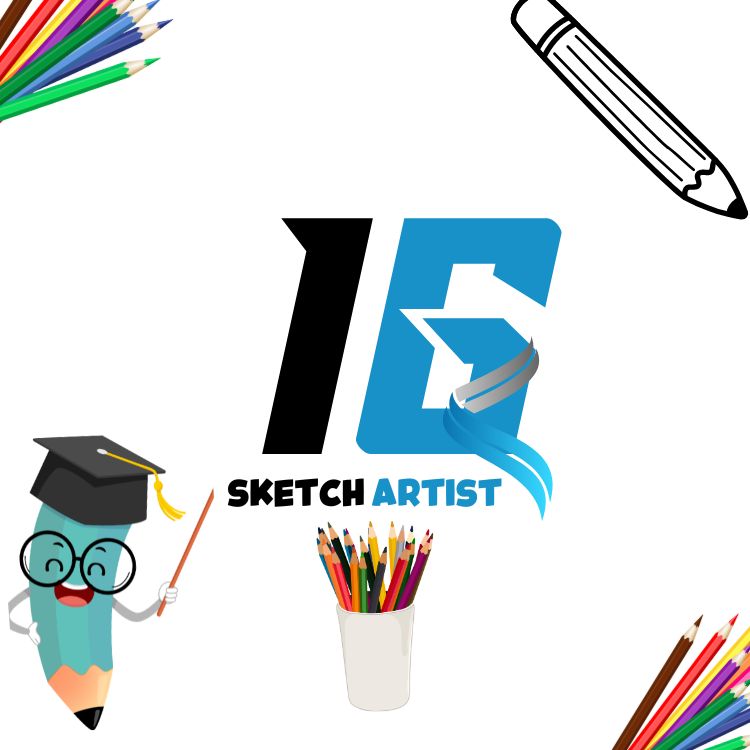The Historical Roots Of Sketching
- There are no clearly defined periods as to when the first sketch drawing were made; since the dawn of man. It is in the form of images made by our ancestors, some as old as thirty thousand years ago, in what is now known as Lascaux, France. They were not only the creative works of art but also an essential part of the way in which the early people conveyed information.
- With the development of civilization, all the methods and means of sketching have also evolved. Artists in ancient Egypt employed papyrus as a materials and reed brushes for writing and drawing depiction of the societies activities and religious undertakings. Likewise, sketching was helpful significant in the classical art of Greece and Rome as well as in the Renaissance. Draftsmanship was important to help artists get a picture of the sculptures, buildings or frescoes on the wall in order to get the correct scale.
Nonetheless, it was in the renaissance that sketching received its due as a legitimate art form. Professional artists who include Leonardo da Vinci, Michelangelo and Raphael among others relied on sketch drawing in their works. They contain draughts that express the artist’s curiosity and this genius in varied subjects from the anatomy of man to engineering. Among the seven cartoons, one can admire Michelangelo’s movements and gestures in their successful and expressive theatricality that will be later transferred to frescoes.
The Role of Sketching in the Art Drawing
To a number of artists, drawing usually serves as one of the fundamental stages in the creation of an artwork. It enables them to trial concepts, try out layouts and develop their concepts before forming a final piece of work. Sketches may be very loose, rapid, with the intention of expressing the basic idea of a scene or an idea; and on the other hand, sketches may be slow, elaborate studies prior to the production of a piece of work.
Perhaps the most widely known example of this is the employment of sketching while painting frescoes in the Vatican’s Sistine Chapel. Art Drawings called “cartoons” were full size designs from which the frescoes were painted, and these cartoons were initially made by Michelangelo. These art drawings prepared him as to the more intricate positions and arrangements that would be painted on the chapel dome in bright hues.
On this front, sketching also acts as a way of taking notes by sketching. Sketchbooks are commonly utilized to draw something of interest to the artist, people, places or events, that in the future may be developed into a complete artwork. For instance, John Constable who was an English painter especially of the landscape was famous for drawing sketches of the English countryside. These sketches can be done by pencil or pen and these very quick drawn images were employed as preliminary to his final large oil paintings.
Techniques and Tools of the Drawing Ideas
Graphite Pencils: Scribblers, most preferred for drawing ideas, are graphic pencils that come with some form of hardness that ranges from B, which is relatively soft, and H for hard. Soft pencils are used for producing ebony black lines and has more pressure to put while sharp pencils used for fine lines and less pressure.

Charcoal: Drawing ideas with charcoal is particularly well liked by artists who work in black and white because of excellent contract and the possibility to draw thin lines as well as large broad strokes. It’s arguably most effective when the drawing in question is a fluid, sweeping one.

Ink: Ink sketching can be created using pen or brush, and the lines are also thick and black which creates more detail as it can adopt techniques like hatching and cross-hatching. The use of ink sketches is almost infinite and has been applied by artists for hundreds of years.

Pastels: Pastels have the convenience of filling the works with colour, they have a very smooth blending quality. They can be employed to render just above surface hues all the way to strong, flat ones, not to mention the varied intensity levels in between.
Styles of art and the content to be portrayed form the basis of medium to be used by an artist most of the times. Pencil has its charm and so has ink and charcoal; depending on what the artist feels will give him or her the best picture. Regardless of the medium, the goal of sketching remains the same: to hit off the character in a nutshell with elegance
The Significance of Sketching in History of Art Painting

Sketches have been serving as the essential tools for drawing in art for centuries; they are introduction to the actual work of art painting and help the artists find out the weaknesses and strengths of their idea. But sketches are also very useful to us in their capacity as art pieces, as well as records of the past.
Some of the world’s most well-known artists are known for their sketches as much as paintings or sculptures. For instance, sketches of Leonardo da Vinci, which are deemed valuable as far as understanding the process of his creative work and his virtuosic feeling of volume and movement. His drawing of the time and perfect proportioned and dynamically positioned Vitruvian Man image is one of the most popular and recognizable in the arts.
In the same way, the sketches of Rembrandt are finally available for the viewers, providing them with the insight onto one of the greatest painters of the Dutch Golden Age. Neglecting sharp facials, irregular lines, and contours, sketches of Rembrandt are loosed, fluent; sometimes they are made in pen and ink; in such sketches, the main subject is defined with several strokes.
Modernism in the nineteenth century revived sketch depicting modern art painting for the people to emulate. Of sketching and drawing it is worth mentioning that the originators of the movement and energy of the modern world as artists such as Edgar Degas and Henri Toulouse-Lautrec are considered to be. The sketches, at least those made in pastel or charcoal, are famous for the spontaneity and lively impressions.
Sketching in Contemporary Art Design

In the modern art world, sketching is still significant and valued as a todays technique. Sketching still plays a very pivotal role in the contemporary art domain where many an artist who experiments with new concepts and tried and tested tools, employs it.
An example is urban sketching which has been on the rise in recent past. People without tablets and pencils go outside with their sketchbooks and draw ordinary and extraordinary buildings in cities. This practice, which is a sort of a mix of old school sketching and documentary, has many followers on social media where artists publish their work and find people with similar interests.
It has also availed new opportunities for sketch artists through the use of digital technology. The next recent permutation of artists’ tools is the ability to draw on a tablet using a digital stylus and the software emulates traditional media. It has come to this that we are witnessing new generation of digital sketch artists who use the basics of the traditional art design and the benefits of the new technologies.
Nevertheless, the basics of sketching have not been altered at all. From shape drawings using pencil and paper, to tablet with stylus, sketching is all about fast and efficient image depiction. It has always been a feature of the art design-making process and, even now, takes considerable dexterity and instinct to achieve.
The Future of Sketching Visual Arts

Looking to the future, the significance of sketching is not in question; as the methods and tools of artists’ practice evolve, the ability to draw a picture and to make a mark on paper, board or canvas will endure.
Through the use of digital visual arts , the art form has evolved to be more open for anyone to perform. Surrealism is now free from the confines of media and artists are free to virtually put into practice the style. This has led to the recent upsurge of the art of sketching especially among the young artists in the art world who are experimenting with the ability of sketches.
Then again, conventional drawing techniques are gaining more attention than they have ever received in the past. Today, a number of artists choose to draw with pencil, charcoal or simply ink because of the feeling and the immediacy of touch to the paper. Drawing and especially sketching sessions as well as classes are preferred, as the popularity of drawing with a pencil grows due to the received satisfaction.
In conclusion therefore, we can say that visual arts is one of the artistic solutions that have not been defined by time and technology. From the Flavian frescoes of the Cave of Lascaux to the sketchbook on the electronic tablet in the present generation, sketch artists have been very essential in the history of art. The art of sketching will go on and remain compelling into the future and stir creativity in the artists as well as the audience.
AI- Drawing Assisted Sketching
It would probably take sometime for Artificial intelligence drawing to breakthrough in many creative industries, but sketching is now experiencing it. There are several ways through which such designs with the help of future scrivings using tools that are supported by artificial intelligence drawing would probably be useful to artists. Thus, AI could help with the proportion, with the perspective or even propose a change of style as according to the artist.
It is possible to draw simple sketches from a text description now, and as this field develops, the AI system will be a colleague in the process. This may mean that with AI assisting in technical work, artists will spend more time developing and creating awesome art without the worry of technicalities.
How do I improve my sketching skills?
Practice regularly, study anatomy and perspective, look at objects in real life, and consider taking formal art classes or online tutorials

[…] is one significant advantage of sketching – it is highly flexible. There are numerous techniques which an artist can use to drawing […]
[…] He is the best sketch artist and highly recommended artist in Rohini, Delhi who specialize in Pencil sketching, Portrait Sketching and his work are hugely appreciated throughout the art drawing. […]